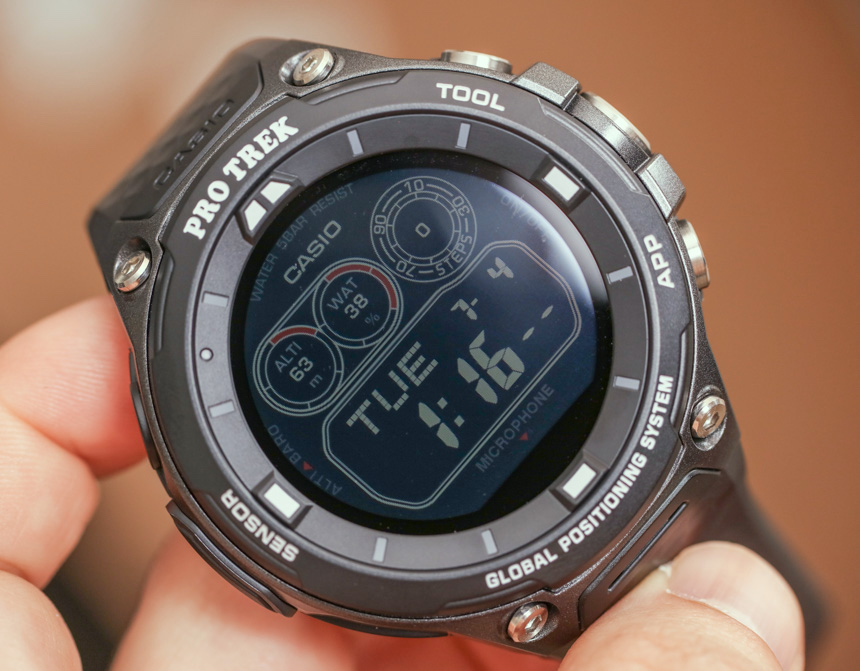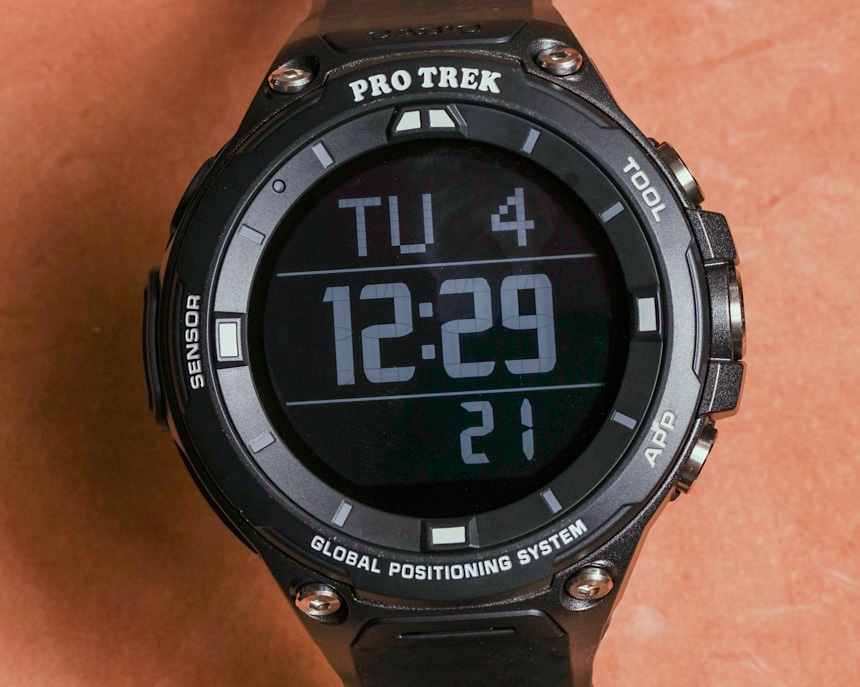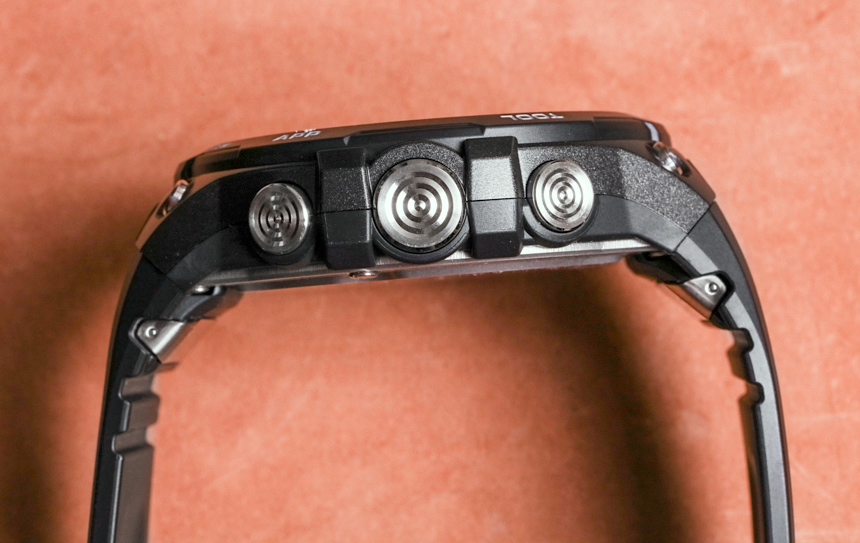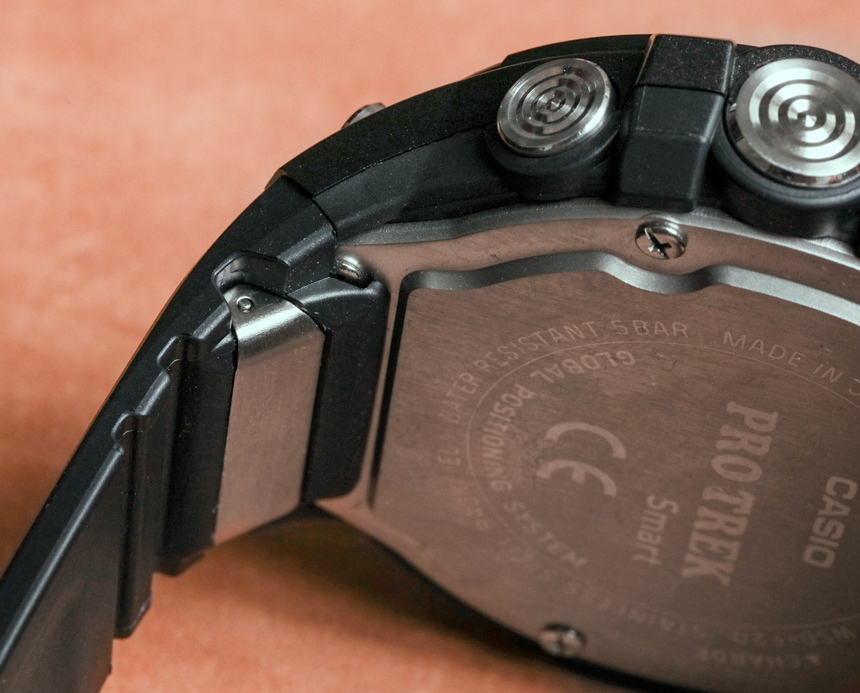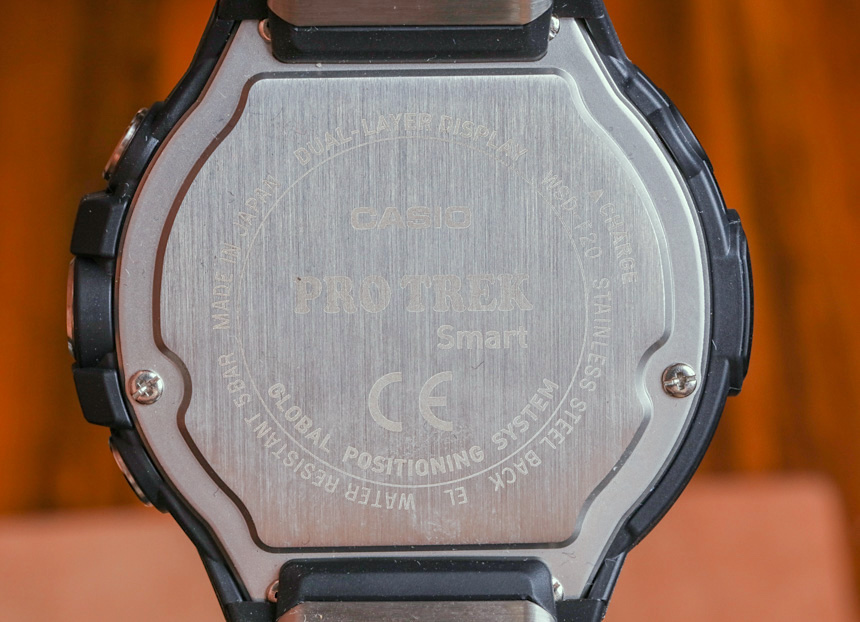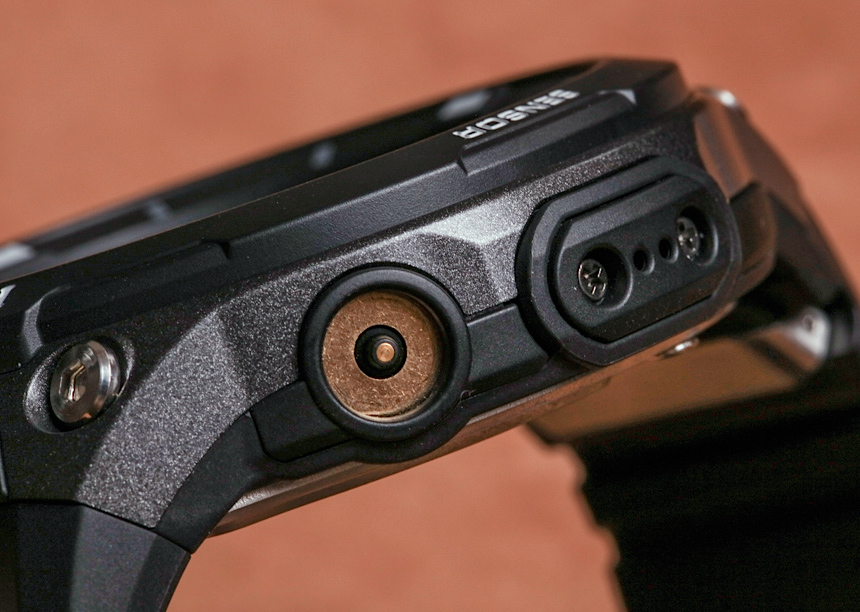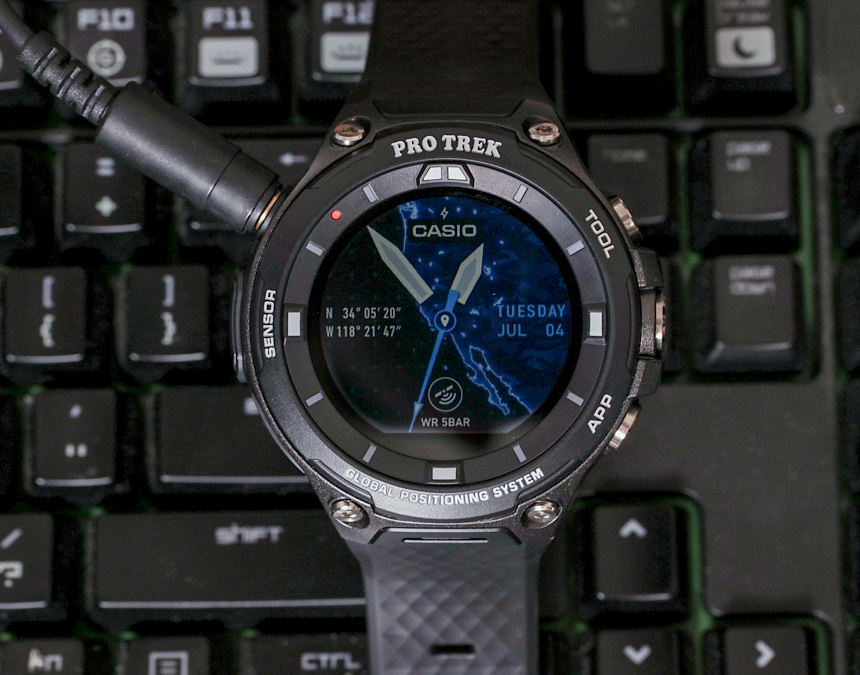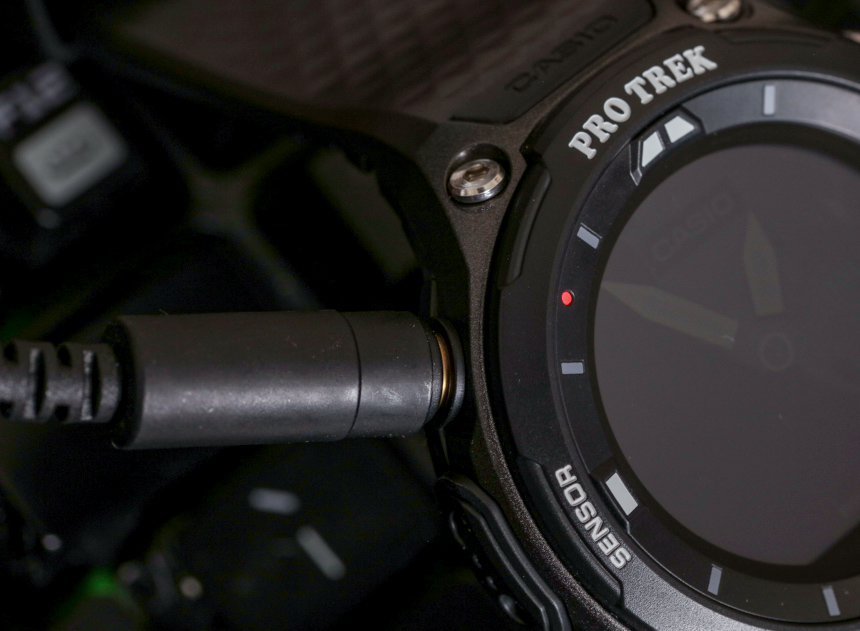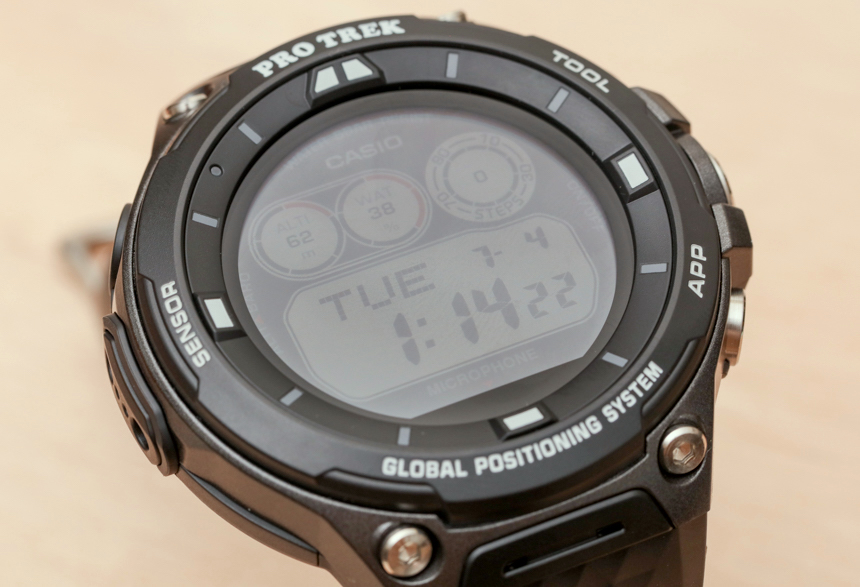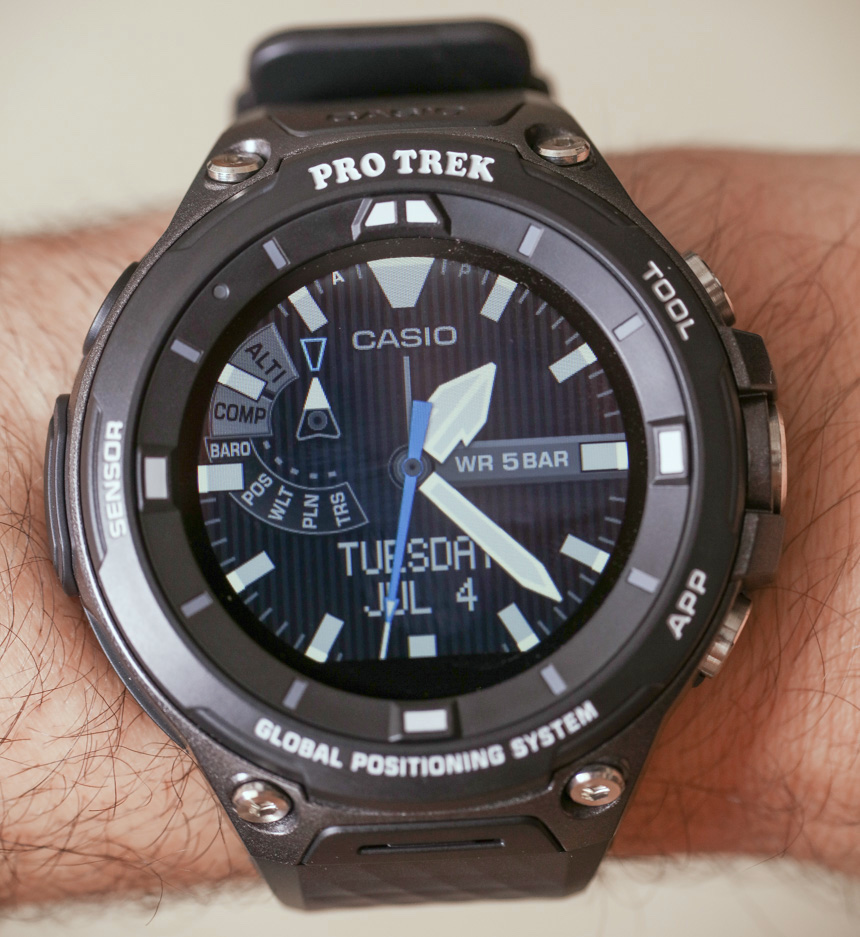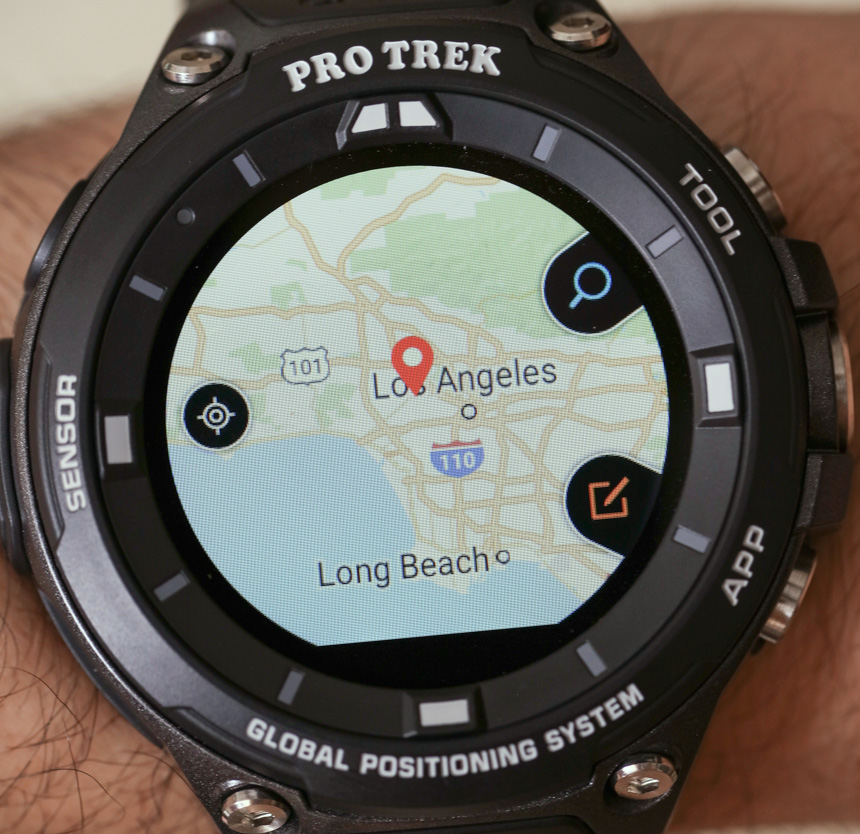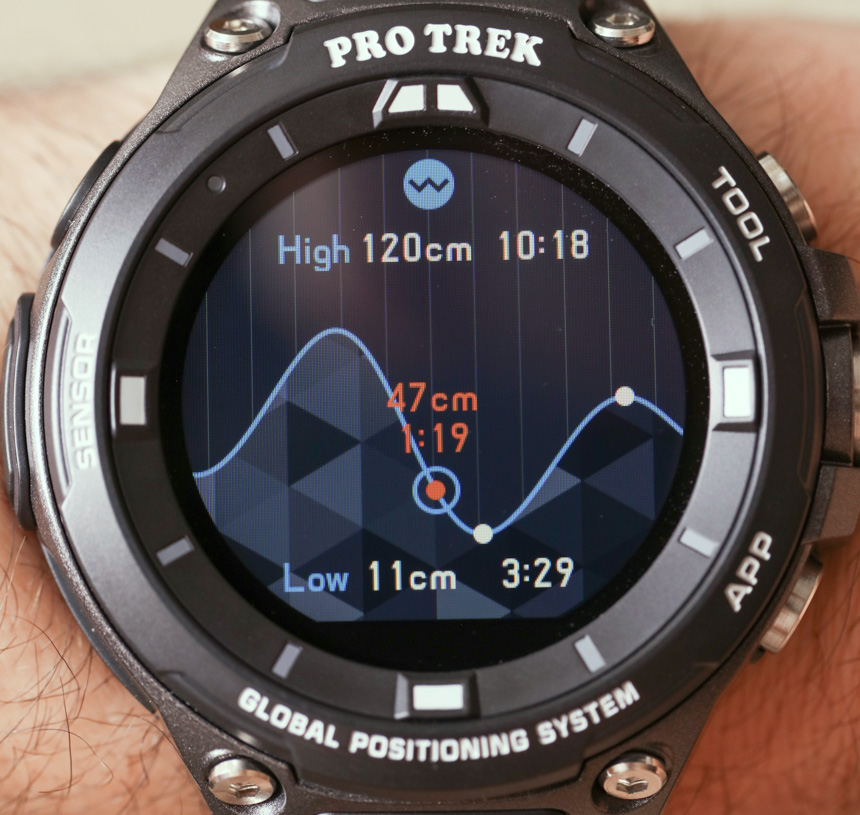
My discussion during this review might point out the very simple fact that it is difficult to compare the Casio Pro Trek Smart to some of the competition, because on paper they do a lot of the same things. Consumers will rather first select an operating system they like and after that choose the watch hardware they are interested in. Garmin and Apple for example (not to mention Samsung) each have their own operating systems. The first thing a consumer will likely decide on prior to getting the WSD-F20 is that they want an Android Wear 2.0-powered watch, and then after that decision they will consider wanting one for an outdoorsy lifestyle.
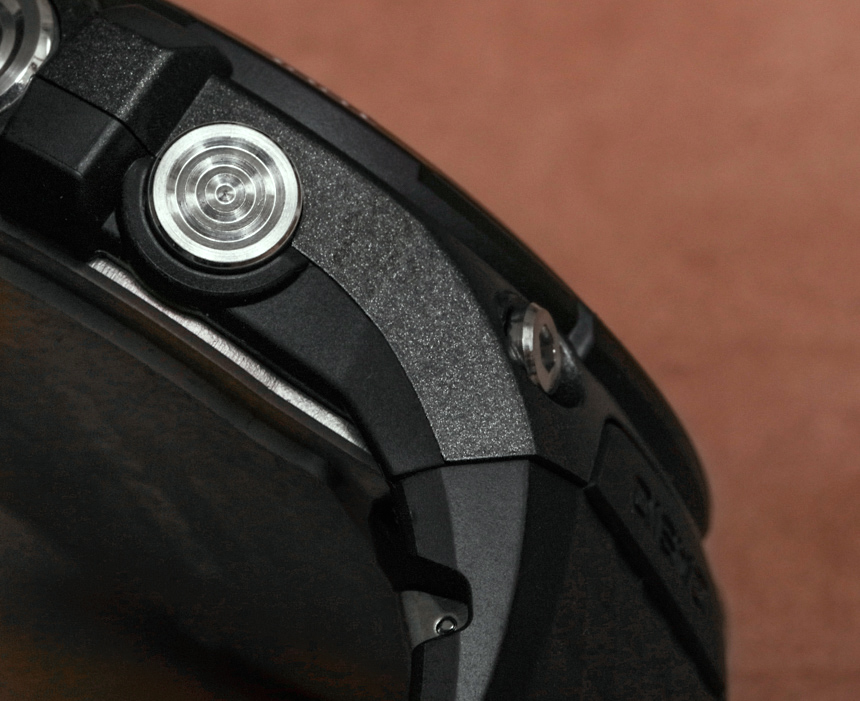
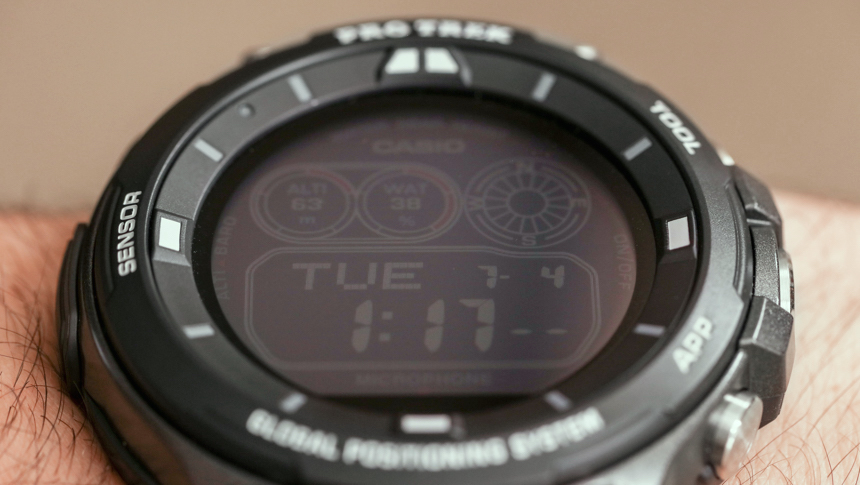
With so many Android Wear watches attempting to be urban chic or to simply look like more traditional watches, Casio’s offering seems more purposeful and it also benefits from Casio’s rock-solid construction. What I like about the WSD-F20 is that the hardware package itself feels very reliable. There are both cheaper and more expensive Android Wear 2.0 watches out there, but few feel as much like a watch as the WSD-F20 does. Clearly there is some different design language given that this isn’t your standard Casio timepiece, but for the most part, you know you are wearing a Casio while wearing the WSD-F20 – and that is a good thing.

Casio’s noteworthy focus on ergonomics is very welcome when it comes to wearing comfort since the WSD-F20 is by most accounts a large watch. 57.7mm wide, 61.7mm tall, and 15.3mm thick never seemed too wearable – despite these being very hefty dimensions. More so, at just 92 grams the watch is relatively light. Part of the comfort simply comes from the strap and the way it is designed to the case, making it securely wrap around your wrist. A non-sliding large watch will always wear much more comfortably.
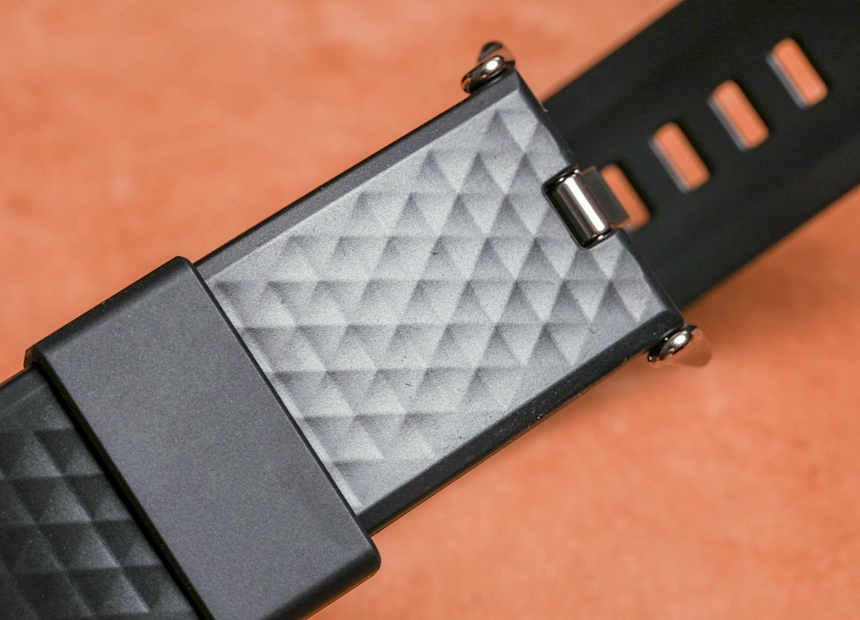
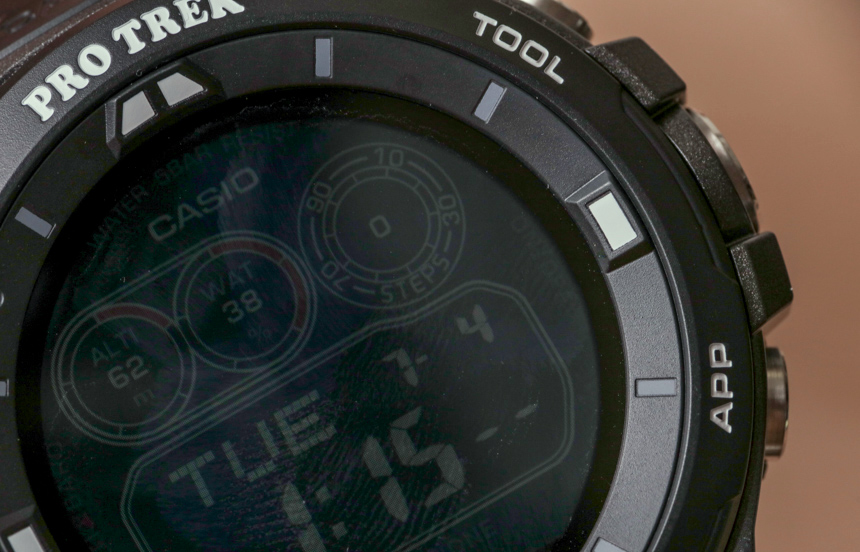
In the United States, Casio offers the WSD-F20 as the WSD-F20BK (black) and WSD-F20RG (red). Both are the same but with a different color case. I do think that offering more color options would be a good idea for Casio. The 1.32 inch diameter screen is inset a bit in order to protect it, and offers a lovely colorful dual layer LCD display. The main layer is a full color screen while the top layer is a monochromatic screen that is used during the always-on state. This is a very welcome feature and while not as fancy as what’s on the Samsung Gear S3, it does make for a rich display that allows for a high degree of legibility (to read the time and date) even when the main display is off and the watch is in standby mode.
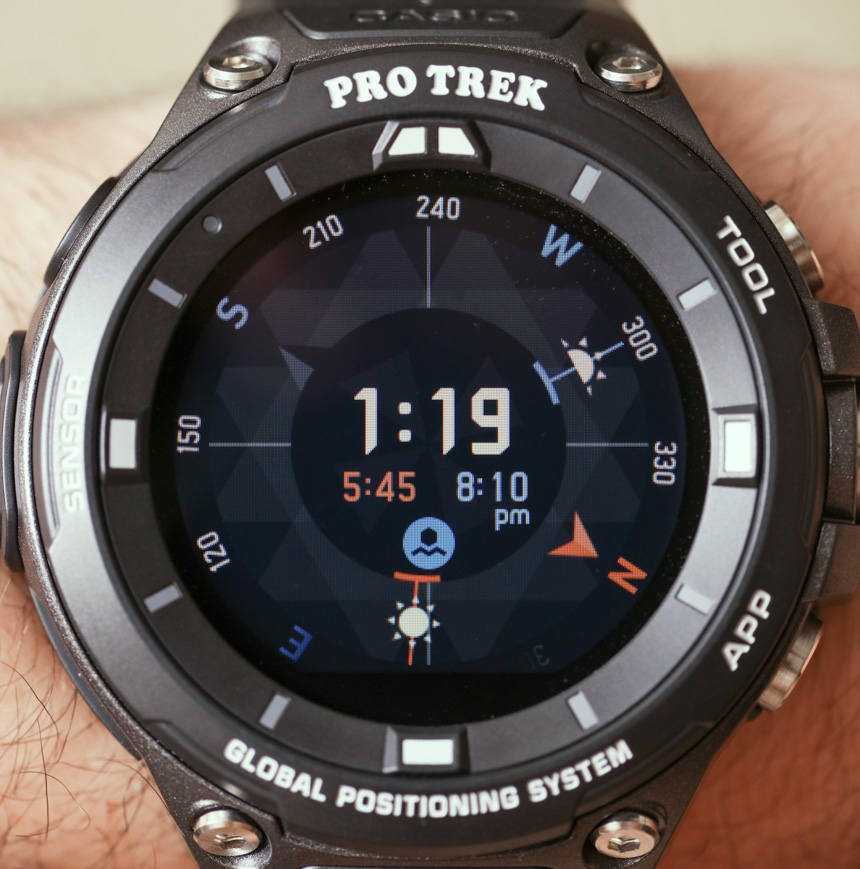
The customized software Casio makes available in the WSD-F20 is similar but slightly updated from what was in the WSD-F10. Both watches have a dedicated “tool” button that brings up a series of screens (pressing the button cycles through them) designed for specific purposes such as to indicate the barometric pressure and act as the compass. Casio seemed to add one or two screens here for the WSD-F20, and they are among the best designed parts of the software being not only elegant to use, but also precise and responsive. My favorite screen is a new multi-purpose display that has the time, sunrise/sunset times, and a compass simultaneously.
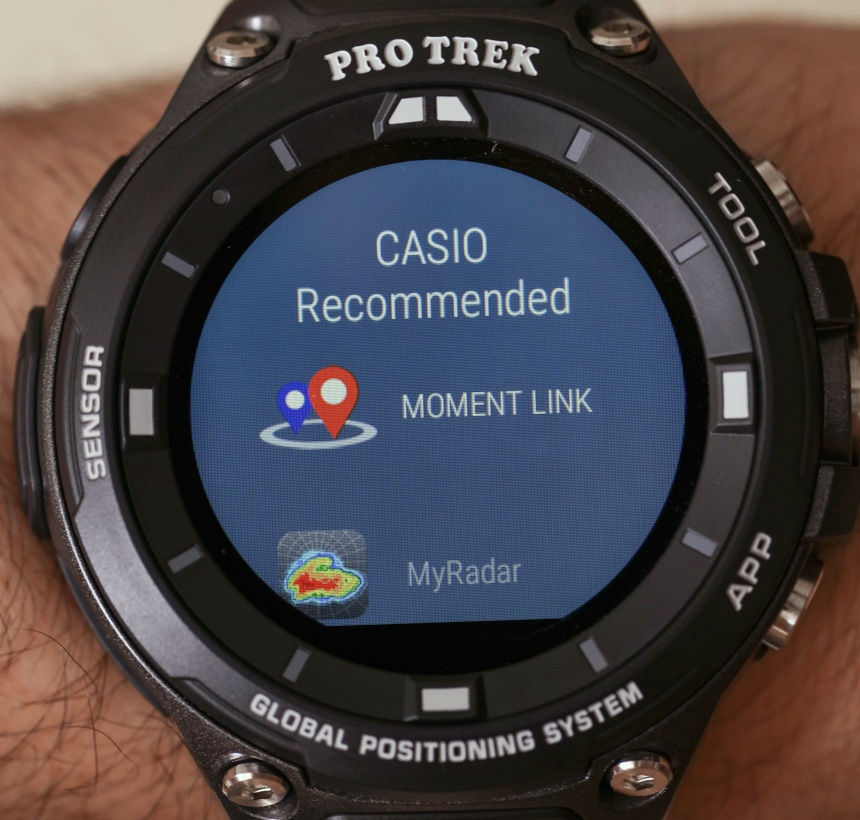
Casio also includes other software in the form of a few Casio-style watch faces (which appear to be even more customizable than before) as well as the Casio Moment Setter, Moment Link, and Activity apps. I didn’t get a chance to use all of these, but each seemed attractive in their design and useful for specific purposes. I will add here that on Casio’s non-smart watches that have Bluetooth, connecting to apps can be challenging as the lower-power sipping movements can sometimes have issues connecting to a phone. With the Android Wear 2.0-powered WSD-F20, as a more standard smartwatch, connecting to the host phone via Bluetooth was no problem. It was equally nice turning off most all notifications so I could enjoy the more “pure” functionality of the watch without having to be distracted by incoming e-mails or news alerts (that I can’t seem to find out how to turn off on my phone).
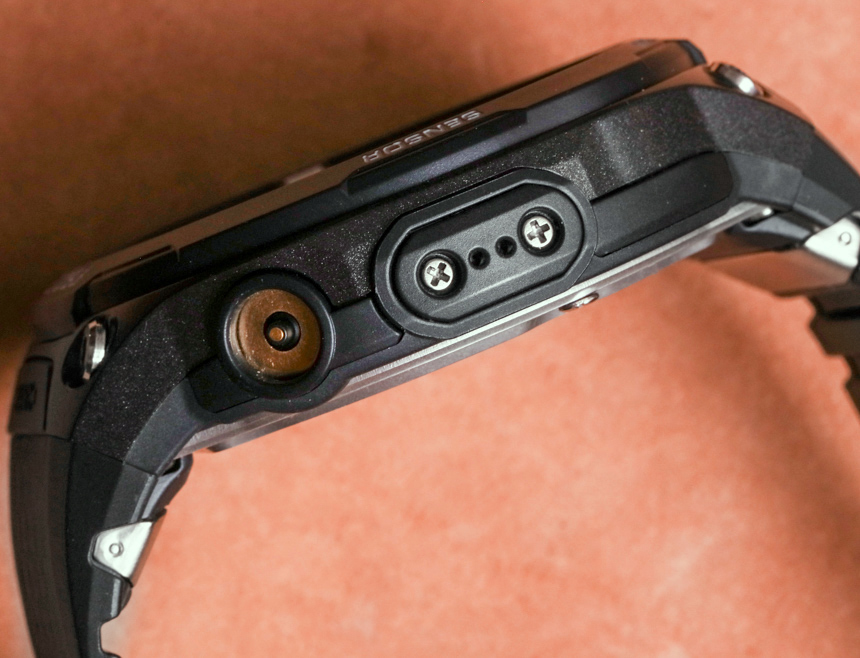
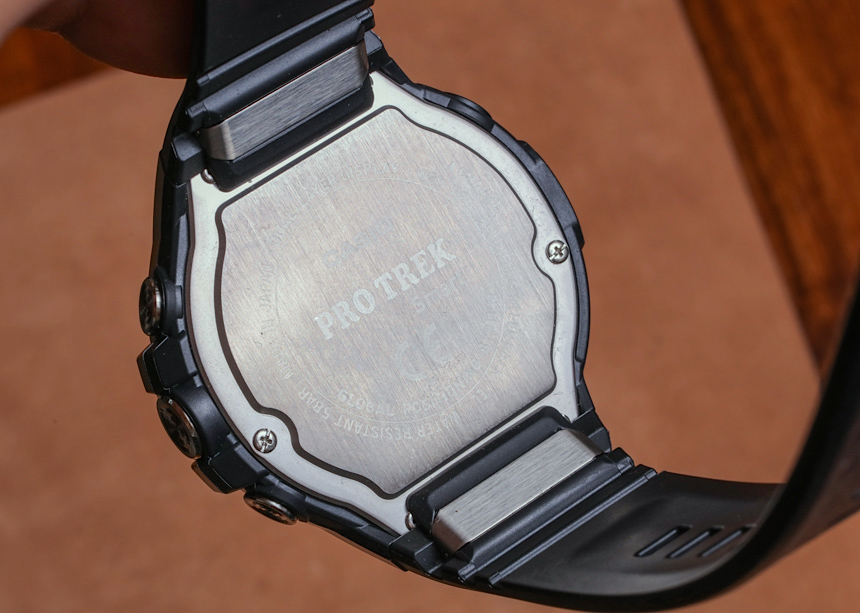
With a Military Standard MIL-STD-810G durability rating and 50m of water resistance, the WSD-F20 isn’t the most durable smartwatch around at this time, but it can probably take more abuse than the majority of smartwatches available on the market right now. I would say that the Garmin Fenix Chronos with its 100m of water resistance is perhaps the most durable (on paper) of the smartwatches out there (it also costs three times as much). More so, Casio approaches case durability differently than pretty much any other watchmaker on the planet. For them, it isn’t about merely assembling durable parts together (like titanium and sapphire crystal) but rather how the parts go together as well as other factors in a watch’s construction that seem to have a lot more to do with durability than mere materials.
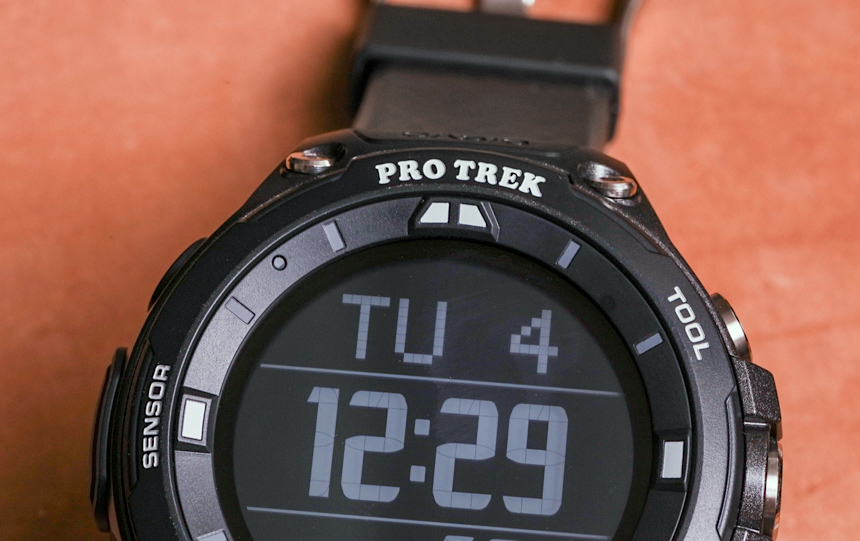

If you like the design (and size) of the WSD-F20, this could easily be a daily wear Pro Trek Smart timepiece. It offers a more masculine feel than most smartwatches, which is an important consideration for style-conscious consumers. It is comfortable enough for the task, and given that it is a full-featured Android Wear smartwatch, you likely won’t find it lacking for most needs. The only real feature missing is a rear-mounted heart rate sensor. Some people love this feature, and some frankly hate it. Casio seems to feel that right now isn’t the time to be getting into the health side of activity tracking. Plus, the watch has a lot of other features which should tell you enough. Casio isn’t accustomed to selling fitness tracking devices, but they are very accustomed to selling hiking and adventure watches. Until they feel that seasoned hikers also want to make sure that they are pushing themselves hard enough, then I don’t feel we will see a heart rate sensor in a Pro Trek Smart anytime soon.
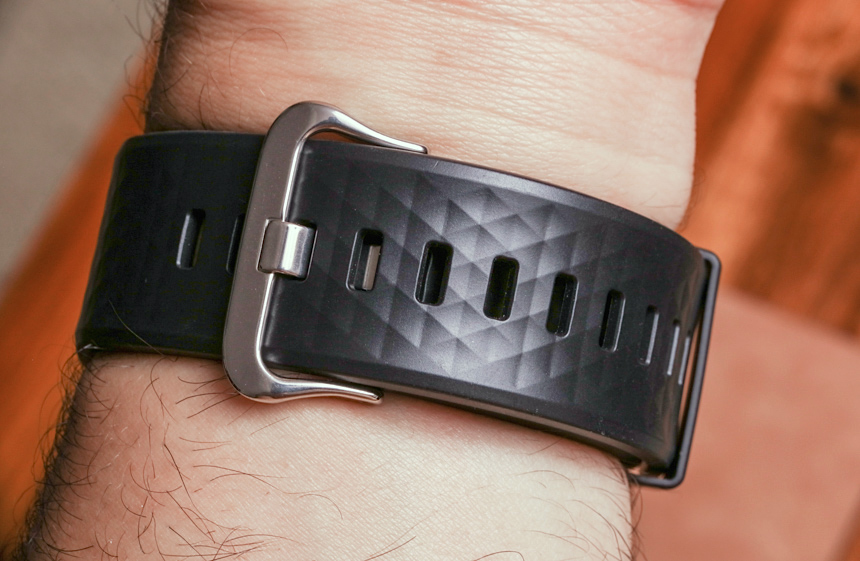
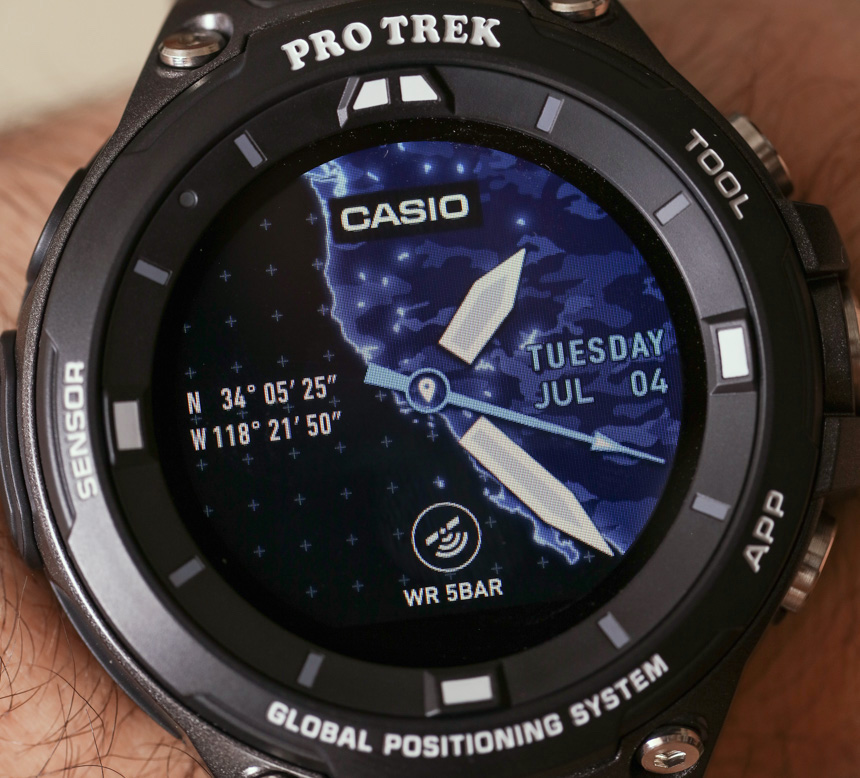
It has been difficult to come to a lot of definitive conclusions about the Casio Pro Trek Smart WSD-F20 because so much of the watch’s performance has nothing to do with Casio, but with things like where you are in the world, the Android Wear 2.0 operating system, and your own ability to learn how to use its many features. I can say that from my experience, this is a very good Android Wear 2.0 device for the price, and it includes enough unique hardware and software elements to help it stick out from the crowd. At the very least, Casio has been able to successfully imbue the watch with personality – whereas a lot of the competition’s watches seem to lack that.
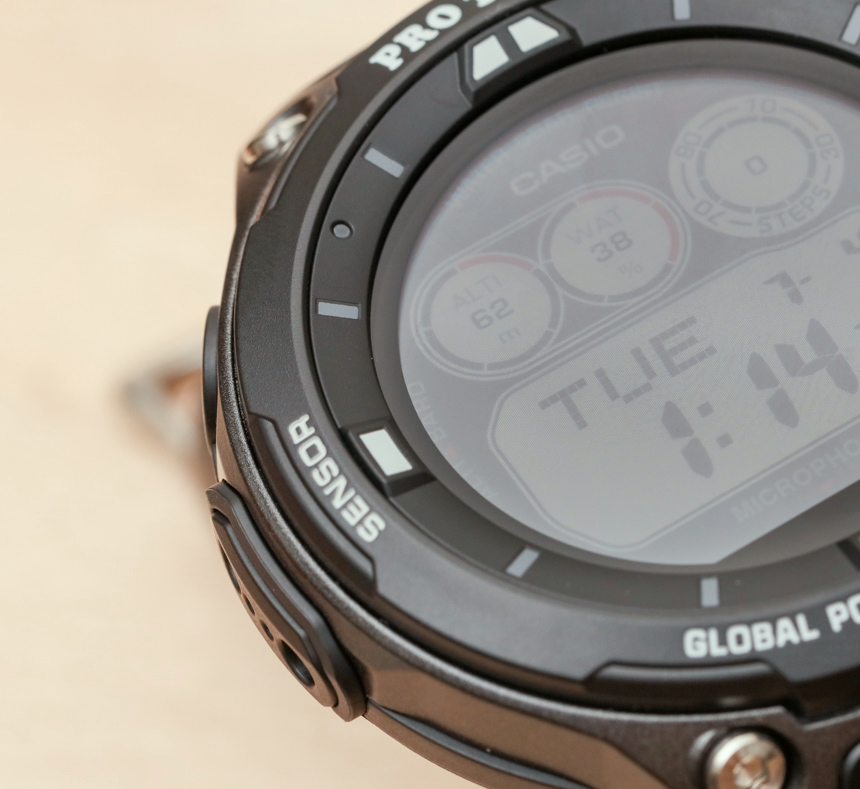
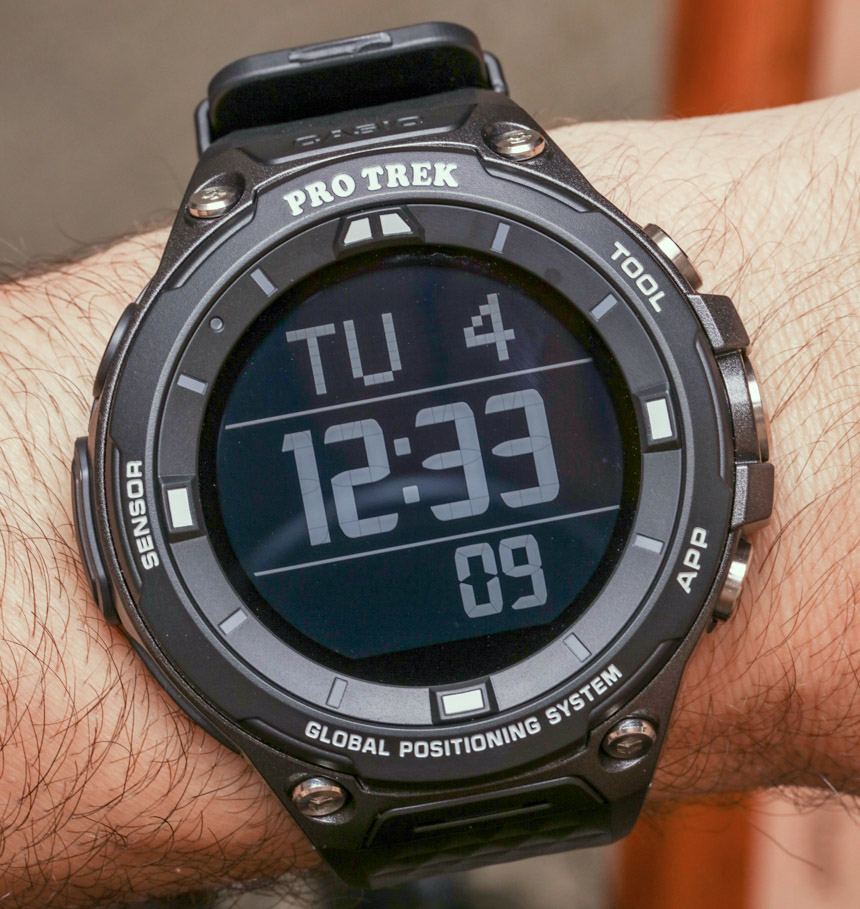
For the money and features, I don’t like any other hiking-specific smartwatch more than the Casio Pro Trek Smart WSD-F20 at this time. Casio has tweaked a good product (the WSD-F10) and made it even better. If you need one of these today, then you likely won’t be disappointed by getting one. With that said, knowing that Casio is hard at work to make this product even better, I can’t help but imagine what future versions of the Pro Trek Smart are going to be like. Price for the Casio Pro Trek Smart WSD-F20 is $499 USD. wsd.casio.com
Necessary Data
>Brand: Casio
>Model: Pro Trek Smart WSD-F20 (WSD-F20BK as tested)
>Price: $499 USD
>Size: 57mm wide
>Would reviewer personally wear it: Yes.
>Friend we’d recommend it to first: Hiker or outdoor adventurer looking to track their journey with a GPS that doesn’t want a watch they are afraid to get a bit dirty.
>Best characteristic of watch: Comfortable to wear, light, and good looking. Screen is sharp, bright, and easy to read. Casio’s software added to Android Wear 2.0 is useful and appealing. Good package for a fair price.
>Worst characteristic of watch: Large size (despite comfort) will limit some wearers. Charging cable easily disconnects. Would check a few boxes for feature-hungry consumers with a heart-rate monitor.

